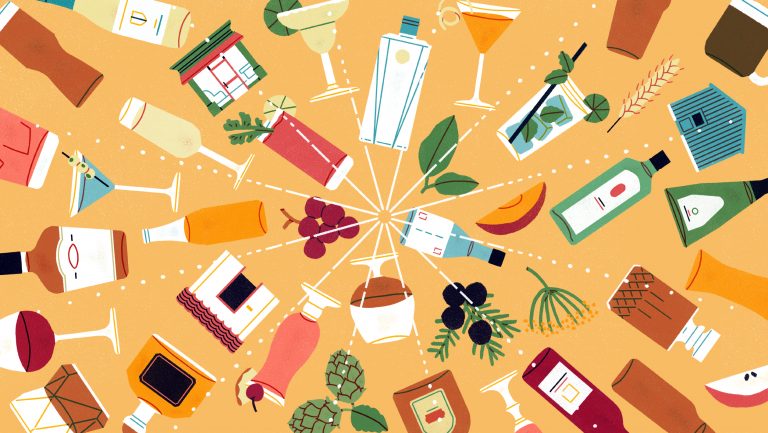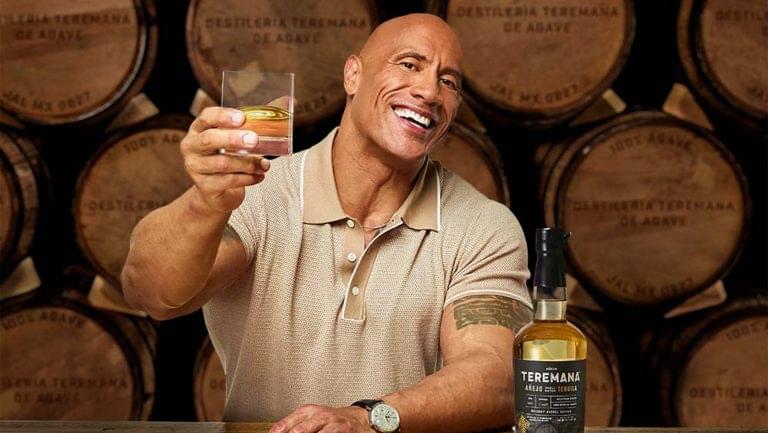I’ve traveled around the world in search of delicious cocktails and the finest spirits—from New York to Tokyo, and even to the Arctic Circle. But during the last two years, I’ve barely left my neighborhood. The experience of living through the pandemic has drastically changed how I drink, what I drink, and where I drink. (Most of my tippling now takes place in my living room.) When will things return to normal? When will I go back to my old routine? I have no idea. But as the editor of the Daily Beast’s Half Full section, it’s my job to predict drink trends and consumer behavior.
Taking a step back from the realities of our everyday life to examine the period, like I would with any other influential and important era, yields interesting insights into what the next 12 months might bring. While the roots of many of these trends go back to the beginning of the pandemic, 2022 won’t just be a continuation of the last few years—it will offer its own set of challenges and potential rewards.
Read on for five spirits and cocktail trends that will help define the next year.

Don’t miss the latest drinks industry news and insights. Sign up for our award-winning Daily Dispatch newsletter—delivered to your inbox every week.
1. Supply Chain Problems Will Continue
Supply chain issues have become the norm for spirits producers over the past two years, and they are sure to get worse before they get better. Thanks to manufacturing delays, shipping issues, staffing problems, and even a scarcity of shipping containers, we will continue to see significant shortages of both rare and well-known spirits brands in the United States.
Companies will also have trouble obtaining essential supplies, including bottles, labels, and possibly grain. Some of the delays will fortunately be relatively short-lived as solutions surface, but other delays have the potential to drag on for months.
Brands may be forced to take a serious look at their portfolios and decide which bottlings to focus their resources on. Thanks to shortages, some producers this year will need to rethink their packaging or switch their suppliers. Wyoming Whiskey, for instance, announced that it needs to temporarily start using a stock bottle instead of their custom one.
As old standbys become unavailable, opportunities open for people to discover new brands or spirits categories. This will surely evolve into a customer service issue for liquor stores, which will need to patiently explain why certain spirits are out of stock and help customers find substitutes.

2. Celebrity Spirits Cement—and Expand—Their Presence
Is there a celebrity in Hollywood that doesn’t have a liquor brand? It’s been hard to keep up with the onslaught of wannabe George Clooneys who are looking for a Casamigos-like payday. The good news is that some of these brands, like Dwayne “The Rock” Johnson’s Teremana Tequila, will transcend their novelty factor and become best sellers.
The bad news is that the success of the Rock and others will only inspire other entrepreneurial-minded stars to enter the industry. I imagine we will continue to see ever more celebrity brands launching until the market reaches oversaturation—which will likely happen in the next two years.
While vodka, tequila, and mezcal have traditionally attracted most of the big names, this year we’ll see lots of stars entering different spirits categories, as well as the ready-to-drink market. The next 12 months will be a real test of the effectiveness of using star power to sell alcohol.
3. The Rise of the Home Mixologist
The hottest bar of the last two years has been the home bar. With many restaurants and establishments closed for long stretches or functioning on severely reduced schedules, people took matters of drink into their own hands. The result? A new generation of accomplished amateur bartenders who are quite good at mixing up a range of drinks from both obscure and common ingredients.
Just as Prohibition changed the way Americans drank at home, including the popularization of living room happy hours, we’ll see some long-term effects from this pandemic. For one, drinks that were once almost exclusively served in craft cocktail bars (think the Negroni, the Old Fashioned, the Boulevardier, the Moscow Mule) will become best-sellers in all kinds of establishments, including casual-dining restaurants.
Advanced home bartenders will also continue to explore more spirits categories. As a result, we’ll see brands and categories popular with bartenders (think rye whiskey and mezcal) reach new heights in the next year.
4. Consumers Will Claim Extreme Brand Loyalty
On the flip side, plenty of people solidified their loyalty to their favorite whiskey, rum, vodka, or gin by buying it over and over again. These shoppers will continue to stock up and fill their bar carts with their favorite brands. They are far less interested in exploring new brands or spirits categories, which is bad news for upstart or craft brands that don’t have the same level of name recognition or credibility with consumers.
While liquor shoppers may have always fallen into these two general categories, I think the pandemic has only deepened the divide. Many drinkers are first introduced to new cocktails, brands, and trends at bars and restaurants. Without that experience, many won’t deviate from their standard routines and will remain extremely loyal to their favorites.

5. Single Malts Are Taking Over
Single malt whiskey is beyond old school, given that it’s been produced for hundreds of years in Ireland and Scotland. But over the last 20 years, it has become incredibly chic and modern, as distillers from around the world give the spirit new twists. These bottlings were once pulled out to impress or entertain friends looking for something obscure to try. But from Italy to India, a large selection of high-quality, global single malts now exists, and they can sell for even more than equivalent Scottish or Irish whiskies. (In the U.S., Suntory just released a few bottles of a very rare Yamazaki 55-Year-Old Single Malt Whisky with a suggested retail price of $60,000.)
While Scotland and Ireland will continue to dominate this category, it will continue to grow and, as a result, become less synonymous with those two countries.
Noah Rothbaum is the editor of The Daily Beast’s Half Full section. Under his leadership, the site won the 2018 and the 2020 Tales of the Cocktail Spirited Award for Best Cocktail & Spirits Publication. He also hosts the podcast Life Behind Bars with legendary cocktail historian David Wondrich, which won the 2018 and the 2021 Tales of the Cocktail Spirited Award for Best Podcast Series. Rothbaum is the author of the book The Art of American Whiskey: A Visual History of the Nation’s Most Storied Spirit, through 100 Iconic Labels and the forthcoming The Whiskey Bible. He is the associate editor of the Oxford Companion to Spirits and Cocktails. His first book, The Business of Spirits: How Savvy Marketers, Innovative Distillers, and Entrepreneurs Changed How We Drink, was published in 2007.


